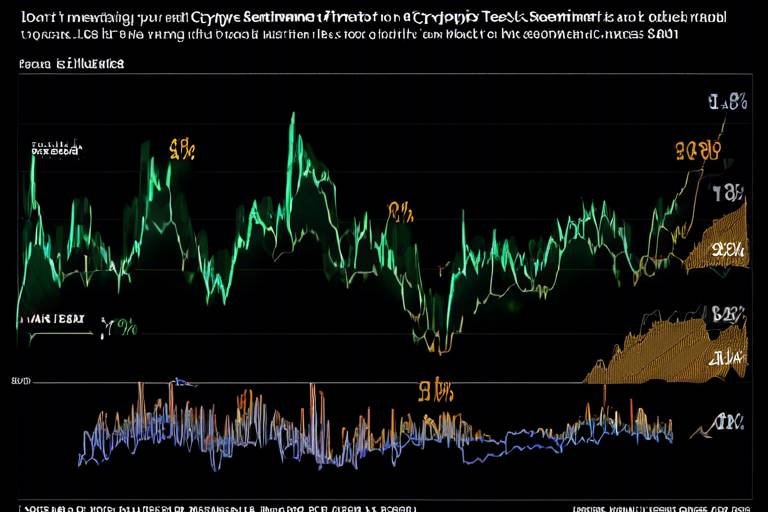The Role of Blockchain in Public Sector Innovation
This article explores how blockchain technology is revolutionizing the public sector by enhancing transparency, efficiency, and security in government operations and services. In an era where trust in public institutions is waning, blockchain emerges as a beacon of hope, promising to restore faith through its innovative approach to managing information and processes. Imagine a world where every transaction is visible, verifiable, and immutable—this is not just a dream; it's the reality that blockchain can bring to the public sector.
Blockchain technology operates on a decentralized digital ledger system that records transactions across multiple computers, ensuring that no single entity has control over the entire chain. This decentralization is crucial for public sector innovation, as it mitigates the risks associated with centralized systems, such as corruption and fraud. Each transaction is encrypted and linked to the previous one, creating a secure and transparent chain of information that can be audited in real-time. This level of transparency can significantly enhance the relationship between governments and citizens, fostering a sense of accountability that has often been lacking.
Moreover, the implications of blockchain extend beyond just transparency; they touch on efficiency and cost reduction. Traditional bureaucratic processes can be cumbersome and slow, leading to wasted resources and frustrated citizens. Blockchain can streamline these processes, automating tasks that once required extensive human intervention. By reducing the layers of bureaucracy, governments can operate more efficiently, allowing for faster service delivery and improved public satisfaction.
As we delve deeper into the various aspects of blockchain in the public sector, we will explore its potential to enhance transparency, improve efficiency, and bolster security. We will also look at real-world case studies that demonstrate the successful implementation of blockchain technology in various public initiatives. As we navigate this exciting landscape, it's essential to consider the challenges and opportunities that lie ahead, as well as the future trends that may shape the adoption of blockchain in government operations.
- What is blockchain technology? Blockchain is a decentralized digital ledger that securely records transactions across multiple computers, making it nearly impossible to alter or delete data without consensus from the network.
- How does blockchain enhance transparency in government? By allowing citizens to track transactions and resources in real-time, blockchain fosters accountability and trust in government operations.
- Can blockchain reduce costs in the public sector? Yes, by streamlining processes and reducing bureaucracy, blockchain can lead to significant cost savings for governments.
- What are the security features of blockchain? Blockchain uses cryptographic techniques to secure data, ensuring integrity and protection against unauthorized access and cyber threats.
- What challenges does blockchain face in public sector adoption? While blockchain offers many benefits, it also presents challenges such as potential vulnerabilities and the need for robust cybersecurity measures.

Understanding Blockchain Technology
Blockchain technology is often described as a decentralized digital ledger that records transactions across multiple computers in a way that ensures the security, transparency, and integrity of the data. Imagine a digital notebook that everyone can see but no one can erase. This notebook is maintained by a network of computers, known as nodes, which work together to validate and record each transaction in a way that is almost impossible to tamper with. Each block in the chain contains a number of transactions, and once a block is filled, it is linked to the previous block, creating a chain of blocks - hence the name blockchain.
At its core, blockchain operates on a few fundamental principles:
- Decentralization: Unlike traditional databases that are controlled by a central authority, blockchain is distributed across a network of computers. This means that no single entity has control over the entire chain, reducing the risk of fraud and corruption.
- Transparency: Every transaction on the blockchain is visible to all participants in the network. This level of transparency fosters trust among users, as they can independently verify the information.
- Immutability: Once a transaction is recorded on the blockchain, it cannot be altered or deleted. This feature is crucial for maintaining the integrity of the data.
- Security: Blockchain uses advanced cryptography to secure data. Each block is linked to the previous one using a cryptographic hash, making it extremely difficult for anyone to alter the information without being detected.
These principles work together to create a robust system that has the potential to revolutionize various sectors, particularly the public sector. By leveraging blockchain technology, governments can enhance their operations, ensuring that they are more transparent, efficient, and secure. For instance, consider how traditional record-keeping systems may be prone to errors or manipulation. In contrast, blockchain's decentralized nature means that every participant can access the same information, leading to fewer discrepancies and greater accountability.
Furthermore, the automation capabilities that come with blockchain can streamline processes that typically involve multiple intermediaries. This not only saves time but also reduces costs associated with bureaucracy. As we delve deeper into the implications of blockchain in the public sector, it becomes clear that understanding its foundational principles is crucial for appreciating its transformative potential.
In summary, blockchain is not just a buzzword; it is a groundbreaking technology that offers a new way of thinking about data management and security. As we explore its applications further, we will see how it can address some of the most pressing challenges faced by governments today.

Enhancing Transparency in Government
In an era where citizens increasingly demand accountability from their governments, transparency has emerged as a crucial pillar of public trust. Blockchain technology offers a transformative solution to enhance transparency in government operations. Imagine a world where every transaction, every decision made by public officials, is recorded in a way that is immutable and accessible to all. This is not just a dream; it’s the promise of blockchain. By providing a decentralized digital ledger, blockchain enables citizens to track the flow of resources and funds in real-time, fostering a culture of openness that was previously unattainable.
One of the most significant implications of using blockchain for transparency is the ability to hold governments accountable. When citizens can see exactly how their tax dollars are being spent, it creates a powerful incentive for officials to act responsibly. This is particularly relevant in areas such as public spending, where funds can often disappear into a black hole of bureaucracy. With blockchain, every transaction is visible, and any discrepancies can be quickly identified, leading to a reduction in fraud and corruption.
Consider the following key benefits of blockchain in enhancing government transparency:
- Real-time tracking: Citizens can monitor transactions as they occur, providing immediate insight into government spending.
- Immutable records: Once a transaction is recorded on the blockchain, it cannot be altered or deleted, ensuring data integrity.
- Increased accountability: Public officials are less likely to engage in corrupt practices when their actions are visible to the public.
To illustrate the impact of blockchain on transparency, let’s look at some real-world examples where this technology has been successfully implemented:
In countries like Estonia, blockchain has been integrated into various government services to enhance transparency and efficiency. For instance, their e-Residency program allows anyone in the world to start a business online while ensuring that all transactions are securely recorded on the blockchain. This not only simplifies the process for entrepreneurs but also creates a transparent environment where the government can be held accountable for its actions.
Another notable case is in the realm of public procurement processes. Governments worldwide have faced challenges with fraud and corruption in procurement, leading to inflated costs and poor service delivery. By implementing blockchain technology, countries like Georgia have been able to streamline their procurement processes. Every bid and contract is recorded on the blockchain, making it easier to audit and verify transactions. This has resulted in significant savings and has restored public confidence in the procurement system.
Blockchain’s ability to enhance transparency in public procurement is particularly noteworthy. Traditionally, procurement processes are often shrouded in secrecy, leading to suspicions of favoritism and corruption. However, with blockchain, all stakeholders can access the same information, making it nearly impossible for corrupt practices to thrive. For example, in a blockchain-enabled procurement system, the entire lifecycle of a contract—from bidding to execution—can be monitored by all parties involved, including the public. This level of transparency not only deters misconduct but also encourages fair competition.
By increasing transparency, blockchain fosters greater citizen engagement and trust in government operations. When people feel that they have access to information and can see how decisions are made, they are more likely to participate in civic activities. This can lead to a more informed electorate and a stronger democracy. Blockchain acts as a bridge between citizens and public institutions, allowing for a dialogue that was often missing in traditional governance models. As citizens become more engaged, they can hold their governments accountable, driving further improvements in transparency and efficiency.
In conclusion, the integration of blockchain technology into government operations presents a unique opportunity to enhance transparency. By providing a clear, immutable record of transactions, blockchain not only increases accountability but also builds trust between citizens and their governments. As we move forward, it’s essential for public sector leaders to embrace this innovative technology to create a more transparent and efficient governance model.
Q: How does blockchain ensure transparency in government?
A: Blockchain provides a decentralized digital ledger where all transactions are recorded and accessible to the public, ensuring that citizens can track the use of resources and funds in real-time.
Q: What are the benefits of enhanced transparency for citizens?
A: Enhanced transparency leads to greater accountability, reduced fraud and corruption, and increased citizen engagement in government processes.
Q: Are there any challenges to implementing blockchain in government?
A: Yes, while blockchain offers many benefits, challenges such as the need for robust cybersecurity measures and the potential for resistance to change can arise during implementation.

Case Studies of Transparency
When we talk about blockchain enhancing transparency in the public sector, it's not just theoretical—there are real-world examples that illustrate its transformative power. One standout case is the use of blockchain in land registries. Countries like Sweden and Georgia have adopted blockchain-based systems that allow citizens to access and verify land ownership records in real-time. This has not only reduced the time it takes to transfer property but has also significantly decreased the potential for fraud. Imagine being able to buy a piece of land without the fear of hidden liens or ownership disputes. That's the kind of peace of mind blockchain can offer!
Another compelling example comes from the world of government contracts and procurement processes. In the United States, the state of Utah implemented a blockchain solution to track the procurement of state contracts. This system allows all stakeholders to monitor the entire procurement process, from bidding to contract execution. The result? A marked reduction in instances of corruption and fraud. By making every step of the process visible to the public, trust in governmental operations has increased, as citizens can see exactly how their tax dollars are being spent.
Furthermore, the city of Zug in Switzerland, often referred to as "Crypto Valley," has pioneered the use of blockchain for public services. By integrating blockchain into their voting systems, Zug has enabled residents to vote on local issues using a secure and transparent platform. This not only increases voter turnout but also ensures that every vote is accurately counted and verifiable. The implications for democratic engagement are profound, as citizens feel more connected and involved in the decision-making processes that affect their lives.
To sum it up, these case studies demonstrate how blockchain is not just a buzzword; it's a practical solution that enhances transparency in government operations. By providing a secure, immutable record of transactions, blockchain can help build trust between citizens and their governments. As we continue to explore the possibilities of this technology, it's clear that the potential for increased transparency is just the tip of the iceberg. The future of public sector innovation looks promising, and blockchain is at the forefront of that revolution.
- What is blockchain technology? Blockchain is a decentralized digital ledger that records transactions across multiple computers, ensuring transparency and security.
- How does blockchain enhance transparency in government? By providing a public ledger of transactions, blockchain allows citizens to track the use of resources and funds, fostering accountability.
- Can blockchain reduce corruption in public procurement? Yes, blockchain can streamline procurement processes, making them more transparent and reducing opportunities for fraud.
- What are some challenges associated with blockchain? While blockchain enhances security, it also presents unique challenges, such as the need for robust cybersecurity measures to protect against potential vulnerabilities.

Public Procurement Processes
In the realm of public sector operations, public procurement stands out as a critical area ripe for innovation. Traditionally, procurement processes have been bogged down by inefficiencies, lack of transparency, and the potential for fraud. However, the introduction of blockchain technology is changing the game, offering a new way to streamline these processes and enhance trust among stakeholders. Imagine a world where every transaction is recorded in a tamper-proof ledger, visible to all, and where the potential for corruption is drastically reduced. This is the promise that blockchain holds for public procurement.
The essence of blockchain lies in its decentralized nature, which means that no single entity has control over the entire system. This decentralization fosters an environment of transparency, allowing all parties involved in the procurement process—from government agencies to suppliers—to access the same information in real-time. For instance, when a government agency issues a tender, the details can be recorded on the blockchain, making it impossible for any party to alter the information without consensus from others. This not only builds trust but also holds all parties accountable for their actions.
Several countries have started to implement blockchain in their procurement processes, and the results are promising. For example, in countries like Estonia and Georgia, blockchain has been used to track public contracts and ensure that funds are allocated as intended. By creating a transparent trail of transactions, these nations have managed to reduce instances of fraud significantly, thus saving taxpayer money and improving the overall efficiency of government spending.
To illustrate the effectiveness of blockchain in public procurement, consider the following table that summarizes key benefits observed in pilot projects:
| Benefit | Description |
|---|---|
| Increased Transparency | All transactions are recorded on a public ledger, accessible by stakeholders. |
| Reduced Fraud | Tamper-proof records make it difficult to manipulate data or misappropriate funds. |
| Enhanced Efficiency | Automated processes reduce the time and resources needed for procurement. |
| Improved Accountability | Stakeholders can track the flow of funds and the status of contracts in real-time. |
Furthermore, blockchain can facilitate the use of smart contracts—self-executing contracts with the terms directly written into code. These contracts automatically execute when predefined conditions are met, significantly reducing the need for intermediaries. For example, once a supplier delivers goods, a smart contract can automatically trigger payment, ensuring that transactions are completed swiftly and without dispute. This not only accelerates the procurement process but also minimizes bureaucratic delays that often plague government operations.
In conclusion, the integration of blockchain technology into public procurement processes presents a transformative opportunity for governments worldwide. By enhancing transparency, reducing fraud, and increasing efficiency, blockchain can help build a more accountable and trustworthy public sector. As more governments recognize the potential of this technology, we can expect to see a shift towards more innovative and effective procurement practices that ultimately benefit society as a whole.

Citizen Engagement and Trust
In today's fast-paced world, trust between citizens and government institutions is more crucial than ever. Blockchain technology acts as a bridge, enhancing transparency and fostering a sense of trust that has often been eroded over time. Imagine a scenario where every transaction, every decision made by public officials, is recorded in an immutable ledger that anyone can access. This level of transparency not only empowers citizens but also holds government officials accountable for their actions.
When citizens can see how funds are allocated and spent, they feel a stronger connection to their government. No longer are they left in the dark, wondering where their tax dollars are going. Instead, they can track expenditures in real-time, which cultivates a spirit of engagement and responsibility. For instance, if a government project is funded through blockchain, citizens can follow the money trail, ensuring that it is used for its intended purpose. This visibility can lead to increased participation in public discussions and decision-making processes.
Moreover, blockchain technology offers a level of security that traditional systems simply cannot match. With its decentralized nature, it minimizes the risk of fraud and manipulation, further enhancing trust. Citizens are more likely to engage with a system that they believe is secure and fair. When they know their voices matter and their contributions are valued, they become more active participants in their communities.
To illustrate this point, consider the following benefits of blockchain in promoting citizen engagement:
- Real-Time Information Access: Citizens can access updated information regarding government projects and initiatives, leading to informed discussions and decisions.
- Accountability: With every action recorded, public officials are more likely to act ethically and responsibly.
- Increased Participation: Transparency encourages citizens to take part in governance, leading to a more democratic process.
As we look towards the future, the potential for blockchain to enhance citizen engagement and trust is immense. Governments that embrace this technology will not only improve their operations but also strengthen their relationships with the public. By fostering an environment of transparency and accountability, blockchain can transform the way citizens interact with their government, leading to a more engaged and informed populace.
Q1: How does blockchain improve transparency in government?
A1: Blockchain provides a public ledger where all transactions are recorded and can be viewed by anyone, ensuring that government actions are transparent and accountable.
Q2: Can blockchain technology help in reducing corruption?
A2: Yes, by making transactions traceable and immutable, blockchain reduces opportunities for fraud and corruption in government processes.
Q3: What are the challenges of implementing blockchain in the public sector?
A3: Challenges include the need for technical expertise, the potential for resistance to change, and ensuring data privacy and security.
Q4: How can citizens get involved with blockchain initiatives?
A4: Citizens can participate by staying informed about blockchain projects in their area, providing feedback, and engaging in public forums or discussions.

Efficiency and Cost Reduction
In the ever-evolving landscape of public sector operations, efficiency and cost reduction are paramount. Governments worldwide are continually seeking innovative solutions to streamline their processes, cut unnecessary expenses, and deliver better services to their citizens. Enter blockchain technology, a game-changer that promises to revolutionize how public institutions operate.
Imagine a world where bureaucratic hurdles are minimized, and resources are allocated with pinpoint accuracy. Blockchain can make this vision a reality. By automating processes and eliminating redundancies, blockchain not only accelerates service delivery but also reduces the costs associated with traditional methods. For instance, consider the procurement process, often riddled with inefficiencies and prone to fraud. With blockchain, every transaction is recorded in a secure, transparent ledger that all parties can access. This transparency not only fosters trust but also significantly decreases the time and money spent on auditing and compliance.
To illustrate the impact of blockchain on efficiency, let’s take a look at a few key areas where it has already made significant strides:
- Streamlined Administrative Processes: By digitizing records and automating workflows, governments can drastically cut down on paperwork and processing times.
- Reduced Fraud and Corruption: The immutable nature of blockchain records deters fraudulent activities, saving governments millions in lost funds.
- Improved Resource Allocation: Real-time data access allows for better decision-making, ensuring resources are directed where they are most needed.
Moreover, the cost savings associated with blockchain implementation can be substantial. A study by the World Economic Forum estimated that blockchain could save governments up to $100 billion annually by enhancing efficiency and reducing fraud. This is not a mere theoretical exercise; many governments are already witnessing these benefits firsthand. For example, in countries like Estonia, blockchain has been integrated into various public services, resulting in significant reductions in operational costs and time.
As we look to the future, the potential for blockchain to enhance efficiency in the public sector is enormous. However, it’s essential to approach this technology with a clear strategy and an understanding of the unique challenges it may present. The integration of blockchain requires a shift in mindset, a commitment to training personnel, and an investment in the necessary infrastructure. Yet, the payoff can be transformative, leading to a more agile, responsive, and cost-effective public sector that truly serves its citizens.
In conclusion, the adoption of blockchain technology in public sector operations is not just a trend; it’s a vital step towards creating a more efficient and cost-effective government. With its ability to streamline processes, reduce fraud, and enable real-time data access, blockchain has the potential to reshape the public sector landscape, ensuring that taxpayer dollars are spent wisely and effectively.
- What is blockchain technology? Blockchain is a decentralized digital ledger that records transactions across multiple computers, ensuring transparency and security.
- How can blockchain improve government efficiency? By automating processes, reducing bureaucracy, and enhancing transparency, blockchain can lead to significant cost savings and faster service delivery.
- Are there any challenges associated with implementing blockchain? Yes, challenges include the need for robust cybersecurity measures, training personnel, and investing in infrastructure.
- What are some real-world examples of blockchain in government? Countries like Estonia have successfully integrated blockchain into public services, leading to reduced costs and improved efficiency.

Security and Data Integrity
In the digital age, where data breaches and cyber threats are rampant, ensuring security and data integrity has become paramount for governments around the world. Blockchain technology offers a revolutionary approach to safeguarding sensitive information. By utilizing a decentralized network, blockchain creates a secure environment where data is not only stored but also verified across multiple nodes. This means that once a transaction is recorded, it becomes nearly impossible to alter or delete, providing a level of trust that traditional systems struggle to achieve.
Imagine a world where government records—be it land registries, tax filings, or public health data—are tamper-proof. With blockchain, every transaction is encrypted and linked to a previous transaction, forming a chain of blocks that is visible to all authorized parties. This transparency ensures that any attempt to manipulate the data would be immediately apparent, thus enhancing accountability. As we dive deeper into the security features of blockchain, it’s essential to understand how these mechanisms work to protect data integrity.
One of the standout features of blockchain is its use of cryptographic hashes. Each block contains a unique hash of the previous block, which means that if someone tries to change the information in one block, it would alter the hash and disrupt the entire chain. This characteristic not only protects the data but also acts as a deterrent against fraud and unauthorized access. Moreover, the decentralized nature of blockchain means that there is no single point of failure. Even if one node is compromised, the rest of the network remains intact, ensuring that data remains secure.
However, while blockchain significantly enhances security, it is not without its challenges. The technology itself is complex and requires robust cybersecurity measures to protect against potential vulnerabilities. For instance, if a hacker gains control of more than 50% of the network's nodes, they could theoretically manipulate the blockchain. This scenario, known as a 51% attack, highlights the importance of maintaining a sufficiently decentralized network.
To address these challenges, governments and organizations must invest in comprehensive security protocols. This includes regular audits of the blockchain network, implementing multi-signature transactions, and ensuring that all participants in the network are vetted and monitored. Additionally, ongoing education about the evolving cybersecurity landscape is crucial for all stakeholders involved in the public sector.
In conclusion, blockchain technology presents a formidable solution for enhancing security and data integrity in government operations. By leveraging its unique features, public institutions can protect sensitive information while fostering a culture of transparency and trust. As we continue to explore the potential of blockchain, it is clear that its role in the public sector will only grow, making it an essential component of modern governance.
- What is blockchain technology? Blockchain is a decentralized digital ledger that records transactions across multiple computers, ensuring security and transparency.
- How does blockchain enhance data integrity? By using cryptographic hashes and a decentralized network, blockchain makes it nearly impossible to alter or delete data without detection.
- What are the cybersecurity challenges associated with blockchain? Challenges include potential 51% attacks and the need for robust security protocols to protect against unauthorized access.
- Can blockchain be used in all areas of government? While it has significant potential, its application may vary based on specific needs and existing infrastructure.

Cybersecurity Challenges
While blockchain technology is often hailed as a beacon of security in the digital age, it is not without its own set of . The decentralized nature of blockchain does provide a robust framework for protecting data, but it also opens the door to unique vulnerabilities that can be exploited by malicious actors. One of the primary concerns is the potential for 51% attacks, where a group of miners could gain control of the majority of the network's mining power. This could allow them to manipulate transactions, double-spend coins, or even halt transactions altogether. Imagine a bank where a single group has control over all the vaults; the implications would be dire.
Furthermore, the security of blockchain networks is heavily reliant on the strength of the cryptographic algorithms used. If these algorithms are compromised or if quantum computing becomes a viable threat, the entire system could be at risk. For instance, if a hacker were to break the encryption that secures the data on a blockchain, they could potentially access sensitive information stored within. This raises the question: how prepared are we for such advancements in technology?
Another challenge lies in the human element. Social engineering attacks, where hackers manipulate individuals into divulging confidential information, can undermine even the most secure blockchain systems. This could involve phishing attacks aimed at users or even insiders who have access to critical systems. To combat this, organizations must invest in comprehensive training and awareness programs to educate employees about the risks and signs of such attacks.
Moreover, the integration of blockchain into existing government systems can also pose significant challenges. Many public sector organizations operate on outdated infrastructure, and transitioning to a blockchain-based system requires not only technological upgrades but also a shift in organizational culture. This transition can be fraught with difficulties, including resistance to change from staff and the potential for disruptions during the implementation phase. It’s akin to trying to teach an old dog new tricks; the process can be slow and met with skepticism.
In summary, while blockchain offers promising solutions for enhancing security in the public sector, it is essential to recognize and address these cybersecurity challenges proactively. A comprehensive approach that includes robust security protocols, employee training, and continuous monitoring of emerging threats will be critical to harnessing the full potential of blockchain technology.
- What is a 51% attack? A 51% attack occurs when a group of miners gains control of more than 50% of a blockchain network's mining power, allowing them to manipulate transactions.
- How can human error affect blockchain security? Human error, such as falling for phishing scams or mishandling private keys, can lead to significant security breaches in blockchain systems.
- What are the implications of quantum computing for blockchain? Quantum computing could potentially break the cryptographic algorithms that secure blockchain, posing a threat to data integrity.
- How can organizations prepare for cybersecurity challenges in blockchain? Organizations should implement robust security measures, conduct regular training for employees, and stay updated on emerging threats to effectively prepare for cybersecurity challenges.

Future Trends in Blockchain Adoption
As we look towards the horizon, the future of blockchain technology in the public sector is not just promising; it’s poised to be revolutionary. Imagine a world where government operations are not only more efficient but also more transparent and secure. The trends shaping this future are diverse, and they indicate a significant shift in how public institutions will operate. One of the most exciting trends is the increasing integration of artificial intelligence (AI) with blockchain. By combining these two technologies, governments can enhance their data analysis capabilities, leading to more informed decision-making processes.
Another trend is the growing emphasis on interoperability. As more public sector entities adopt blockchain, the need for different systems to communicate seamlessly will become critical. This means developing standards and protocols that allow various blockchain networks to interact with one another. The potential for collaboration between governments across borders could lead to enhanced global governance and improved public services.
Moreover, we are witnessing a shift towards regulatory frameworks that support blockchain implementation. Governments are beginning to recognize the need for clear regulations that not only protect citizens but also foster innovation. This regulatory clarity can encourage more public sector organizations to experiment with blockchain solutions, leading to a more robust ecosystem.
In addition, the concept of digital identity is gaining traction. Blockchain can provide a secure and decentralized way to manage identities, which is particularly beneficial in areas like voting, healthcare, and public services. With a blockchain-based digital identity, citizens can have more control over their personal information while ensuring that their data remains secure and tamper-proof.
Lastly, we cannot overlook the importance of public-private partnerships. As blockchain technology matures, collaborations between government entities and private companies will become essential. These partnerships can drive innovation, share resources, and develop solutions that benefit the public sector. By leveraging the strengths of both sectors, we can create a more efficient and responsive government.
In conclusion, the future of blockchain in the public sector is bright, filled with opportunities and challenges alike. As governments embrace these trends, they will not only enhance their operational efficiency but also rebuild trust with their citizens. The journey ahead may be complex, but the potential rewards make it a path worth pursuing.
- What is blockchain technology? Blockchain is a decentralized digital ledger that records transactions across multiple computers, ensuring transparency and security.
- How can blockchain enhance transparency in government? By allowing citizens to track the use of resources and funds, blockchain promotes accountability and trust in public institutions.
- What are the security features of blockchain? Blockchain provides inherent security through encryption and decentralization, protecting sensitive data from cyber threats.
- What trends are shaping the future of blockchain in the public sector? Key trends include the integration of AI, interoperability between systems, regulatory frameworks, digital identity management, and public-private partnerships.
Frequently Asked Questions
- What is blockchain technology?
Blockchain technology is a decentralized digital ledger that records transactions across multiple computers. It ensures that the data is secure, transparent, and immutable, meaning once a transaction is recorded, it cannot be altered. This technology is the backbone of cryptocurrencies but has far-reaching applications in various sectors, including the public sector.
- How does blockchain enhance transparency in government operations?
Blockchain enhances transparency by allowing citizens to track the flow of resources and funds in real-time. This visibility helps to build trust between the government and the public, as it holds authorities accountable for their actions. By making information accessible and verifiable, blockchain can significantly reduce corruption and fraud in public sector transactions.
- Can you give examples of blockchain in public procurement?
Absolutely! One notable example is the use of blockchain in public procurement processes to streamline operations and reduce fraud. For instance, some governments have implemented blockchain to track bids and contracts, ensuring that all actions are recorded transparently. This has led to more competitive bidding and better resource allocation.
- What are the security benefits of using blockchain in the public sector?
Blockchain offers enhanced security features that protect sensitive government data from cyber threats. Its decentralized nature means that there is no single point of failure, making it difficult for hackers to manipulate or steal information. Additionally, the cryptographic techniques used in blockchain ensure that only authorized parties can access or modify data.
- What challenges does blockchain face in terms of cybersecurity?
While blockchain enhances security, it also presents unique challenges. For example, vulnerabilities can arise from poorly designed smart contracts or inadequate security measures in the surrounding infrastructure. This necessitates the implementation of robust cybersecurity protocols to mitigate risks and ensure the integrity of blockchain systems.
- What future trends can we expect in blockchain adoption within the public sector?
Future trends in blockchain adoption in the public sector may include greater integration with other technologies like AI and IoT, leading to more efficient government operations. Additionally, as governments continue to explore blockchain's potential, we might see increased collaboration between public and private sectors to develop innovative solutions. However, challenges like regulatory frameworks and public acceptance will need to be addressed.



















